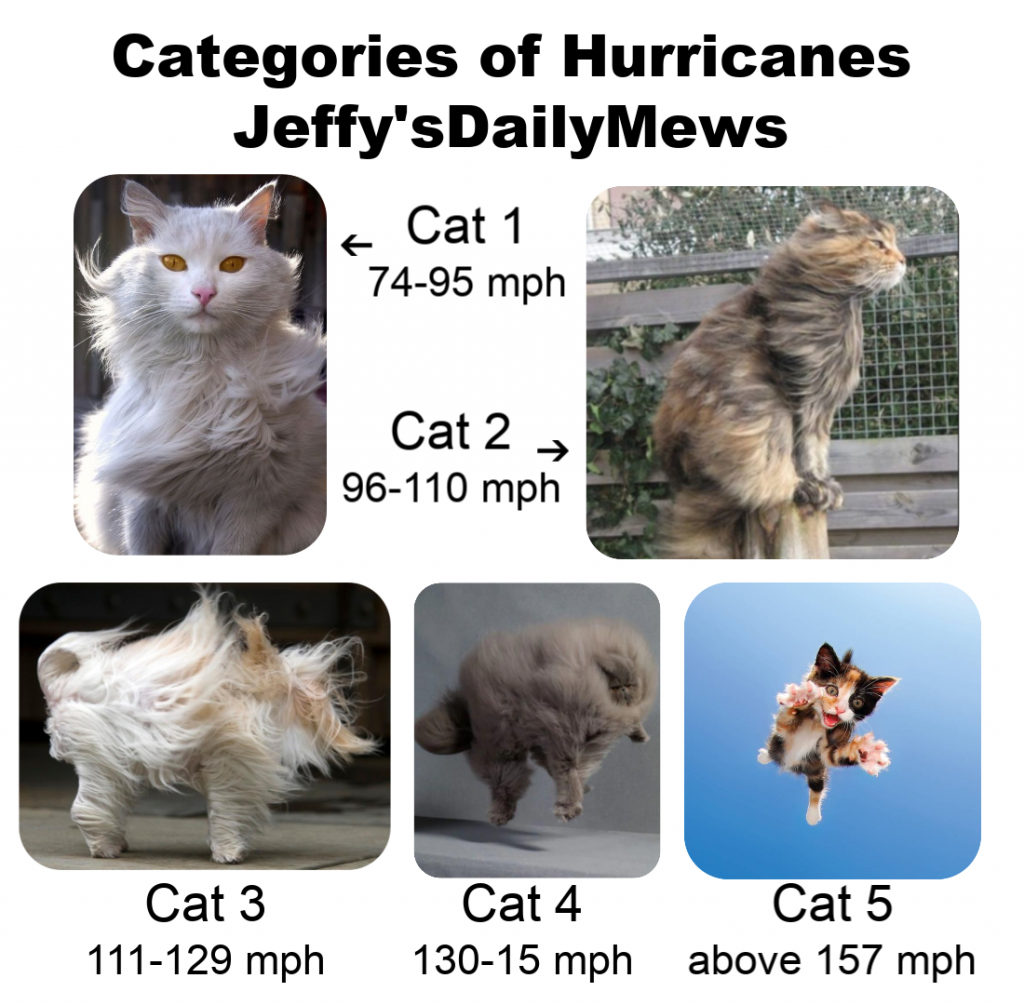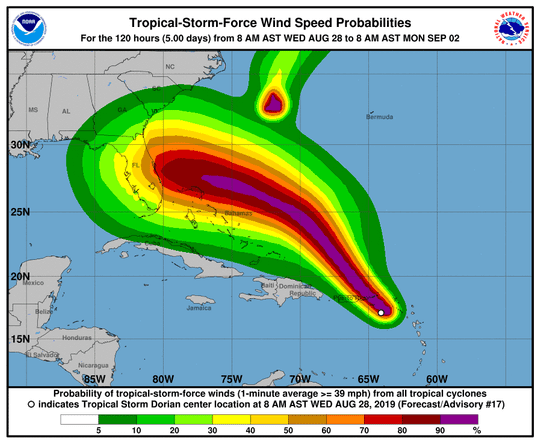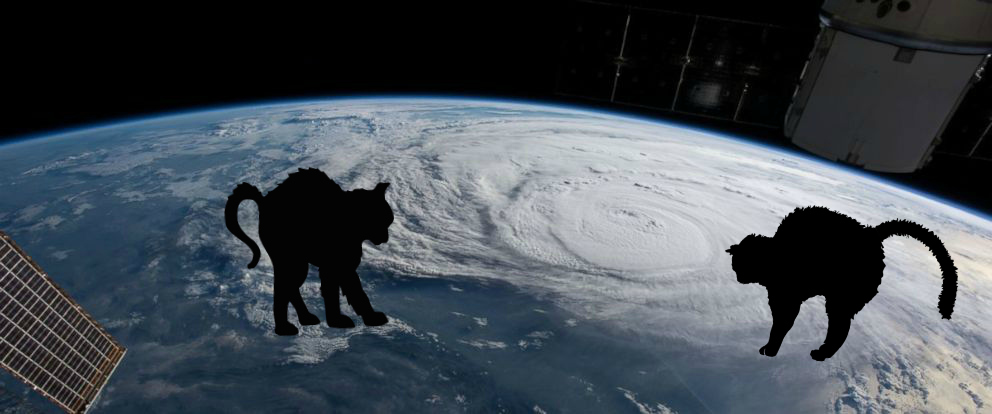
Hurricane Dorian is intensifying as it speeds toward the Florida coast. In its path, families are trying to determine whether they should flee the area or stay and protect their home. Regardless of whether you bug out or stay behind, here are some hurricane safety suggestions to help you keep your pets safe during the impending disaster.
- If you manage cat colonies go the Alley Cat Allies website for keeping feral cats safe.
- Microchip your cat / dog. If he’s already chipped, contact the chip registry database and update your contact info, especially a current cell phone.
- Take recent photos of your cats with you and store them in Ziploc bags to protect them. This is proof of ownership should you need to claim your cats.
- Set up a buddy system with your neighbors. If a disaster occurs and they can’t get to their pets, you will help them and vice versa. Exchange house keys, evacuation plans and pet information with your pet safety buddy.
- Regardless of whether you bug out or stay behind, here are some suggestions to help you keep your pets safe during the impending disaster.

If you evacuate:
- Don’t leave pets home alone. If it’s not safe for you, it’s not safe for your pets.
- Put a harness with ID tags on your cats. (A harness makes it easier for volunteers or staff at a shelter to handle your frightened cat.) Include your current your cell phone number.
- As soon as you decide to evacuate, make reservations at pet-friendly hotels out of the evacuation area.
- Contact officials about the locations of pet friendly evacuation shelters.
- Make sure you take proof of your cat’s current rabies vaccination. Evacuation shelters accepting animals will need proof of rabies vaccination.
- Packing kitty necessities
- Medications (at least a 2 week supply).
- Vaccination records. You really need proof of rabies shots in order to go to a shelter that accepts animals.
- Leash
- A carrier for each pet large enough, not only to hold a litter box, but your cat must be able to stand up, turn around, lay down. If he’s ends up in an evacuation shelter, this will be his home until you can claim him. Give him a dirty T-shirts with your scent to sleep on. Evacuation is stressful. Never put two pets in the same carrier even if they’re good friends.
- A two week supply of food (canned and / or dry, depending on what your cat normally eats) and water, plus food and water bowls for each pet.
- Litter Box and litter for two weeks, litter scoop and baby wipes.
- Comfort items like cat toys, favorite blanket or towel (with a familiar scent), and favorite treats.
If you shelter in place:
- Bring your pets inside well ahead of the storm.
- Close pet doors so your cat can’t go outside.
- Set up a safe room in the most interior room in your home for you and your pets to take shelter until the storm passes. Keep carriers and flashlights, car keys, emergency provisions and emergency or equipment for you and your pets in the safety room.
- In the Aftermath
- Keep cats confined to the safe room until you know that your home and yard are safe.
- Don’t let your pets outside until you know it’s safe. Outdoor hazards include contaminated water, sharp debris and downed live power lines.
If you must leave pets behind:
- Microchip your pet. If he’s already chipped, contact the chip registry database and update your contact info, especially a current cell phone.
- NEVER confine your pet to a carrier, close him inside a room or tie him to furniture. If your home floods, your pet’s need to be able to get away from rising waters.
- Turn off your home’s electricity to prevent your pet from being electrocuted.
- Leave enough food and water for at least a week.
- Spray paint the words “PETS INSIDE” and the number of cats and dogs inside. This notifies rescuers that your pets need help.
Do you have any suggestions for keeping pets safe? Post them in the comments below.












Recent Comments